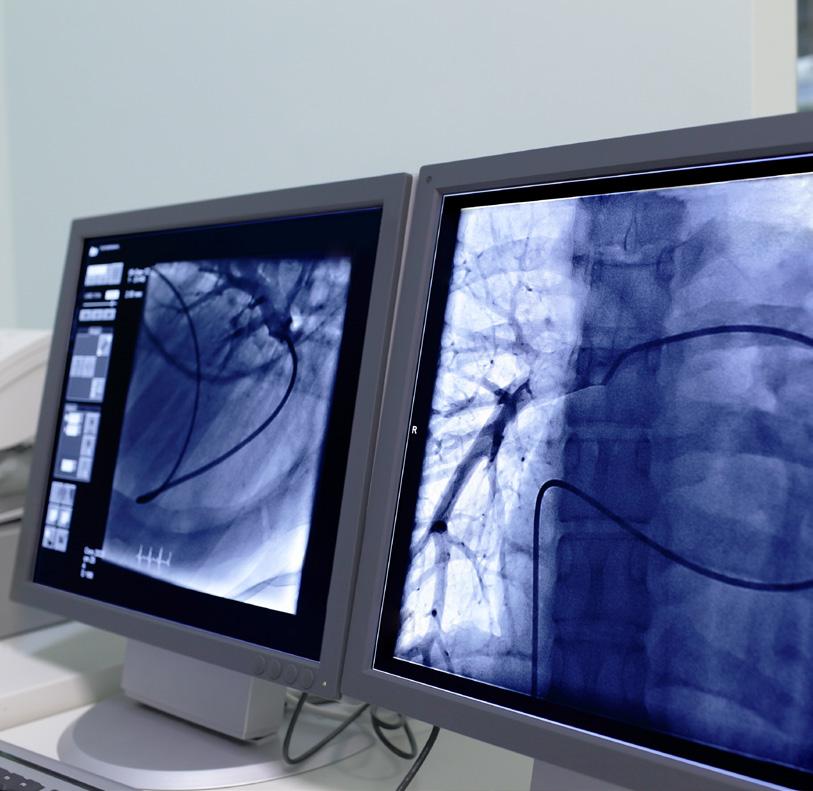
SCAN TO VIEW THE CURRICULUM FOR THIS MAJOR


SCAN TO VIEW THE CURRICULUM FOR THIS MAJOR
Radiography is an allied health profession that employs X-radiation to produce images of the human body. The B.S. in Radiography at USF is a “2+2 program.” This means participating students will complete two years of liberal and pre-professional science education courses at USF before applying for admission to a professional program at Swedish American UW Health in Rockford, Illinois, or Northwestern Memorial Hospital in Chicago. Admission to the professional education component is controlled by the sponsoring hospitals.
The U.S. Bureau of Labor Statistics (BLS) reports that the median national annual wage for radiologic technologists, also known as radiographers, was $61,980 in 2021. According to the BLS, there will be a projected six percent rise in employment for radiographers between 2021 and 2031, which is as fast as the average occupation.
At the University of St. Francis, students benefit from small, intimate classes where they can work closely with professors. Most importantly, USF prepares students for successful careers in radiography and the allied health professions.
USF has given me an unforgettable experience. Faculty members have allowed me to grow both intellectually and as a person. Each professor has supported me and my goals, and was more than willing to help me achieve anything I set my mind to. I was pushed and motivated to learn, grow, and become a better person. This incredible support system has surrounded me with an incredible group of colleagues, mentors, and friends.
— Autumn Lee
A degree in Radiography leads to a successful career as a radiographer. The radiographer performs X-ray examinations while providing patient care, and is responsible for providing the physician with high quality diagnostic radiographs for interpretation. Most radiographers work in hospitals, but some work in other health care facilities. On a day-to-day basis, radiographers perform diagnostic imaging testing that is ultimately used to diagnose fractured bones or to detect other possible injuries or infections. They are a vital part of examining the body’s internal structures in order to properly diagnose and care for patients.
The professional phase of the radiography baccalaureate degree is divided into four phases, which cover a 21to 24-month period of time. During each of the phases, both didactic and clinical experiences will cover a variety of topics which will help turn the student into a professional independent practitioner. The curriculum plan may vary according to the specific affiliated institution, but upon successful completion, will lead to the graduate obtaining a baccalaureate degree as well as a certificate in radiography and the right to sit for the licensure examination. Additional information regarding specific affiliates and curriculum plans can be obtained by contacting academic advisors or admission counselors.
ACCREDITATIONS
The University of St. Francis is accredited by the Higher Learning Commission (hlcommission.org), a regional accreditation agency recognized by the U.S. Department of Education, and is authorized to operate as a post-secondary institution by the Illinois Board of Higher Education (ibhe.org). Both affiliated radiography programs are accredited by the Joint Review Committee on Education in Radiologic Technology, 20 N. Wacker Drive, Suite 2850, Chicago, IL 60606-3182; 312-704-5300; mail@jrcert.org (jrcert.org).